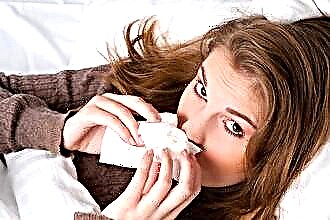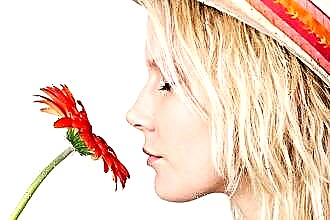For every parent, the child's illness is a cause for concern. If a runny nose in an adult can be ignored, then the treatment of children should be carried out with the participation of a doctor. In childhood, there is a higher risk of complications and the likelihood of the disease becoming chronic. A runny nose in a child is not as harmless as some parents think.
 A severe runny nose in a child is not only nasal congestion and rhinorrhea, but poor sleep, decreased appetite, weight loss and developmental delay. Early hardening will help prevent a runny nose in children, due to which immunity is strengthened, vascular tone is normalized and the body's resistance to environmental factors increases.
A severe runny nose in a child is not only nasal congestion and rhinorrhea, but poor sleep, decreased appetite, weight loss and developmental delay. Early hardening will help prevent a runny nose in children, due to which immunity is strengthened, vascular tone is normalized and the body's resistance to environmental factors increases.
How long does a child have a runny nose? Rhinitis symptoms usually last for about 8-10 days.
Often, rhinitis in children goes through several stages. So, the stages of the common cold in children, replacing each other:
- the first is characterized by signs of incipient itching, sneezing, dryness, tickling in the nose. Usually lasts the first two days, while the temperature remains normal or rises to subfebrile numbers;
- for the second, the appearance of abundant rhinorrhea is characteristic, when transparent snot flows in a child in a large volume. There is nasal congestion, shortness of breath, a decrease in the acuity of smell, taste. At this stage, the child's snot flows in a stream, which causes malaise, irritability, moodiness, inattention, memory deteriorates and working capacity decreases;
- snot in children at the third stage becomes thicker, acquires a yellowish tint. Gradually, rhinitis in children goes away, intoxication, the severity of symptoms decreases. If the child has green snot, this indicates bacterial inflammation.
Rhinitis causes
Why does the child have a runny nose? What provokes a runny nose in a child:
- infectious pathogens. In most cases, the child has snot flowing due to viral, bacterial infection. Many microorganisms enter the body by airborne droplets when sneezing, coughing or talking. However, snot does not always start after infection. It all depends on the level of immunity. With sufficient protection, the body copes with the infection on its own, preventing the onset of symptoms of the disease. Often, a child's snot flows against the background of acute respiratory viral infections, diphtheria, chickenpox or measles;
- a severe runny nose in a one-year-old child may be a manifestation of an allergic reaction. Such rhinitis is often diagnosed in pediatrics. Allergic snot in a child (at 1 year old or at an older age) appears after inhalation of dust, pollen, fluff, wool or perfume. Clinically, the pathology is manifested by frequent sneezing, itching, burning in the nose, shortness of breath, lacrimation. With allergies, parents indicate exactly when a child's runny nose began, because rhinorrhea is characterized by a rapid onset and a watery character. The incipient snot can be stopped by eliminating the effect of the allergen on the child. With allergic rhinitis, it is important to timely detect the provoking factor and protect children from contact with it. With prolonged exposure to the allergen on the body, the risk of suffocation and the development of bronchial asthma increases. Children's rhinitis of allergic origin is more often diagnosed in the presence of a genetic predisposition (that is, if the parents also had allergies);
- vasomotor rhinitis is a consequence of the pathological reaction of blood vessels to the action of an irritating factor. An internal runny nose in a child can be observed against the background of vascular diseases, hormonal fluctuations or pathology of the nervous system. At the age of 6, it becomes difficult for a child to breathe through one nostril, which makes him less active. Parents find that nasal congestion can change with body position. Lying on its side, breathing is absent in the lower nasal passage. Symptoms of rhinitis in children are manifested not only by local clinical signs, but by a deterioration in the general condition. The child complains of a headache, his sleep, appetite worsens, palpitations worries, sweating increases. Aggravation of rhinitis is possible after inhalation of an irritating aroma, exposure to the cold factor, stress, and the use of hot and spicy foods. With rhinoscopy, hyperemia of the nasal mucosa is not observed;
- older children may have symptoms of a medicated rhinitis. Snot can begin due to prolonged use of drugs with a vasoconstrictor effect. Regular use of such drugs is fraught with addiction and dysregulation of vascular tone. The vessels are in an expanded state, due to which the nasal mucosa becomes edematous, rhinorrhea appears, and the parents notice that the child has snot flowed;
- trauma or birth defects of the nose (deformed septum, narrow nasal passages);
- a runny nose in a child at 3 years old may be due to an increase in adenoids due to the proliferation of tonsil tissue. Usually snot has a green tint, a nasal voice, nasal congestion, snoring and morning cough appears.
In most cases, adenoids heal on their own by the age of 12.
Due to frequent colds, hypothermia, malnutrition and the presence of a chronic infection in the ENT organs, snot in the throat and nose can be disturbed every month. Against the background of a decrease in the level of mucosal protection, infection and reproduction of viruses occurs, which leads to the development of rhinitis.
Clinical signs and possible complications
 The following symptoms indicate the onset of a runny nose:
The following symptoms indicate the onset of a runny nose:
- profuse rhinorrhea;
- nasal congestion;
- difficulty breathing through the nose;
- sneezing;
- a feeling of swelling of the tissues of the nose;
- hyperthermia;
- lacrimation;
- heaviness in the paranasal zone.
Frequent friction of the wings of the nose leads to cracks and redness of the skin in this area. Transparent watery snot indicates an allergic origin of the disease or the initial stage of rhinitis. When a green tint and thick discharge appear, it is worth suspecting the addition of a bacterial infection.
The yellow color of snot indicates the onset of the second stage of the disease, but with prolonged storage it can also indicate bacterial inflammation.
 If untreated, a runny nose in a child at 2 years old can lead to the following complications:
If untreated, a runny nose in a child at 2 years old can lead to the following complications:
- otitis media, when a runny nose in a child at 1.5 years ends with the spread of infection, inflammation on the mucous membrane of the auditory tube. Due to the small diameter of the Eustachian tube, the airway function is rapidly impaired, ventilation of the ear sections becomes difficult, which predisposes the activation of opportunistic microbes. Symptomatic otitis media is manifested by pain, tinnitus, hyperthermia and hearing loss;
- sinusitis. If a 2-year-old child has a nasal voice, green snot, pain in the paranasal area, above the bridge of the nose, sinusitis should be suspected. It develops as a result of inflammation of the mucous membrane of the paranasal cavities and the accumulation of viscous mucus;
- meningitis. In children two or more years of age, it is possible for the infection to spread from the paranasal sinuses to the lining of the brain. All this happens against the background of severe immunodeficiency. Children may experience dizziness, headache, nausea, fever above 39 degrees, convulsions;
- developmental delay. Prolonged runny nose in a child at 1 year old can lead to brain hypoxia and impaired mental and physical development;
- pharyngitis, bronchitis. Snot in a 3-year-old child makes nasal breathing difficult, which makes him breathe through his mouth.Cold unpurified air, bypassing the nasopharynx, enters the larynx and lower respiratory tract. As a result, posterior rhinitis develops in the child, coughing, sore throat and hyperthermia appear.
In young children, dehydration and high fever can lead to seizures.
Treatment tactics
When snot appears in a child at 2 years old, you need to consult a specialist. Examination by a doctor makes it possible to establish the cause of the disease and choose an effective treatment.
Treatment options for rhinitis may include:
- rinsing the nasal cavities with saline solutions (Humer, Dolphin, Marimer);
- the use of vasoconstrictors for the nose (Vibrocil, Pinosol);
- the use of homeopathic medicines (Delufen, Sinupret, Cinnabsin, Anaferon);
- the appointment of antiviral (Grippferon, Amiksin, Groprinosin) or antibacterial drugs (Zinnat, Flemoklav);
- instillation of silver-based medicines (Protargol);
- the use of antihistamines (Erius, Zodak, Loratadin);
- the appointment of mucolytic agents (Rinofluimucil).
Of the folk remedies, it is worth highlighting the effectiveness of aloe juice, garlic, onion inhalations and herbal nasal drops.
For rinsing, you can use herbal infusions (chamomile, sage) or saline solution.
Preventive Tips
Prevention of a common cold in children consists in maintaining an adequate level of immune defense. It is necessary to take care of children from an early age - to harden, control the nutritional regimen, devote enough time to sleep and attend sports sections.
Snot in a one-year-old child can lead to serious complications, so consult a doctor in time and do not get sick.



